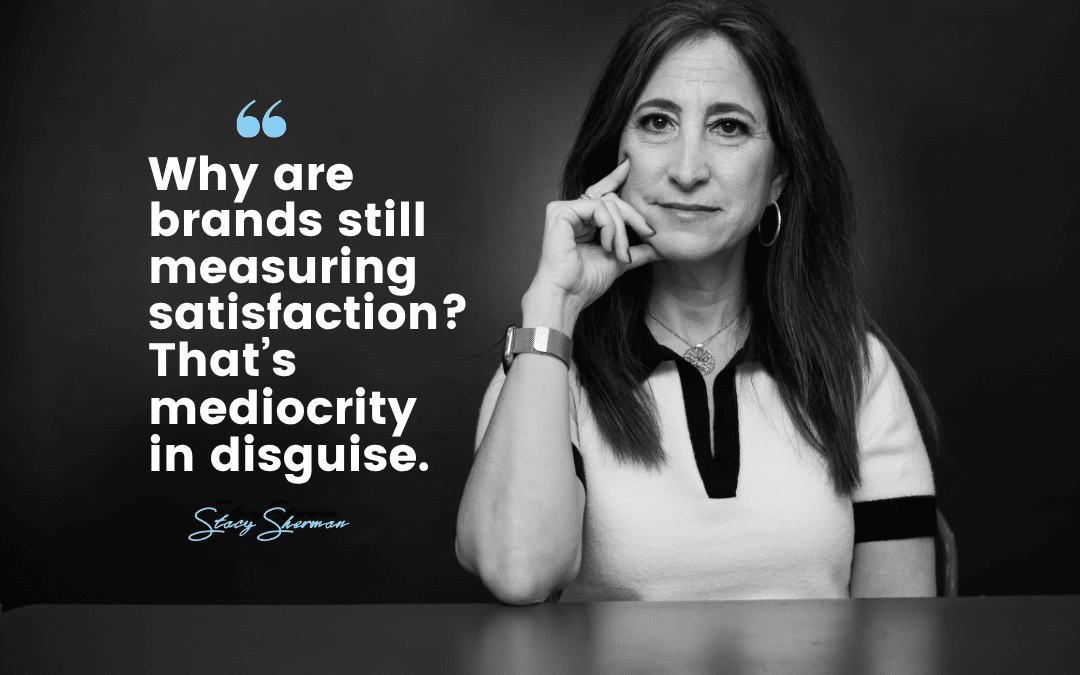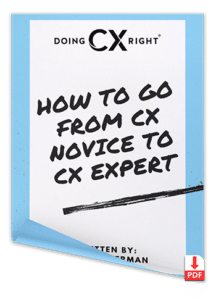
Still Measuring Customer Satisfaction? That Might Be the Problem
Imagine: You go out to dinner. The table’s clean. The food arrives on time. The service is polite. Nothing goes wrong.
Later, someone asks, “How was it?” You pause. “It was fine.” That one word—fine—reveals everything. You probably wouldn’t return because ‘fine‘ is the everyday version of ‘satisfied, and that’s mediocre. That’s “average,” and people need and want more than that.
What Customer Satisfaction Signals (And Why It’s Not Enough)
The Rolling Stones’ “I Can’t Get No Satisfaction” still plays nearly 60 years later—for a reason. It captured something true: the gap between what people expect—and what they get. That same tension is also evident in customer experience (CX).
Satisfaction is often treated as a win. A green metric. A notification that everything is going well. But in reality, it means that nothing went wrong.
And that’s the problem.
It doesn’t indicate the experience was meaningful. It doesn’t mean the customer will come back. It definitely doesn’t mean they’ll recommend you. When my kids were younger—and even now as adults—if I asked how their day was and they said, “It was fine,” I never needed to ask more. I already knew: it wasn’t terrible, but it wasn’t fabulous either.
That’s how satisfaction works. It captures the absence of pain, but not the presence of value. And companies won’t succeed in the long term without it.
The Restaurant “Customer Satisfaction” Test:
Would you put “satisfactory” on a sign outside your restaurant? Would you launch a campaign that says, “Come for a meal that won’t disappoint”? Would you report to your board, “Our customers describe us as fine”?
Of course not.
And yet, that’s exactly how many companies treat customer satisfaction scores. They chase and report them. Attach incentives to them too, and then wonder why customer retention is problematic. In reality, Satisfied customers leave all the time. Because satisfaction is neutral. It’s not negative, but it’s not enough to build loyalty.
What Actually Predicts Customer Retention and Loyalty
After 25 years of working in companies across various industries and listening to customers, here’s what I’ve learned: People come back because something made a lasting impression, not just because the basics were met. Something felt personal, thoughtful, and exceeded expectations.
They remember:
- When someone anticipated their need
- When a problem was resolved before they noticed
- When an interaction felt human—not transactional
They use words like “impressed,” “surprised,” or “they really got me.” They tell stories about the experience—not just the outcome.
And no one ever says, “I was satisfied.”
If you’ve been using the customer satisfaction (C-Sat) metric, that’s okay. It served a purpose. For years, it gave teams a way to start paying attention to experience—and that mattered.
But we’re living in a new era. Customers now require more, and have increasingly more ways to get what they need. AI has made comparing options faster. Switching is easier. And the best experience someone had last week now sets the bar for how they evaluate you.
In that reality, “nothing went wrong” isn’t a reliable signal of loyalty. It’s just a low bar. One that doesn’t reflect how people actually make choices.
If satisfaction is still your Customer eXperience measurement, you’re not alone. But it might be time to ask: What is it really telling you? And what is it missing?
“(I Can’t Get No) Satisfaction” is a fantastic song. It’ll outlive all of us. It’s earned its place.
But the metric?
That’s the one I want you to really consider. Maybe—it’s time to retire it.
Want to know better measurements and ways to design customer experiences the right way to boost retention, revenue, and referrals? Let’s talk.
And, subscribe to my newsletter for ongoing actionable strategies delivered to your inbox.
Listen to Doing CX Right Podcast
Subscribe on your favorite channels.



